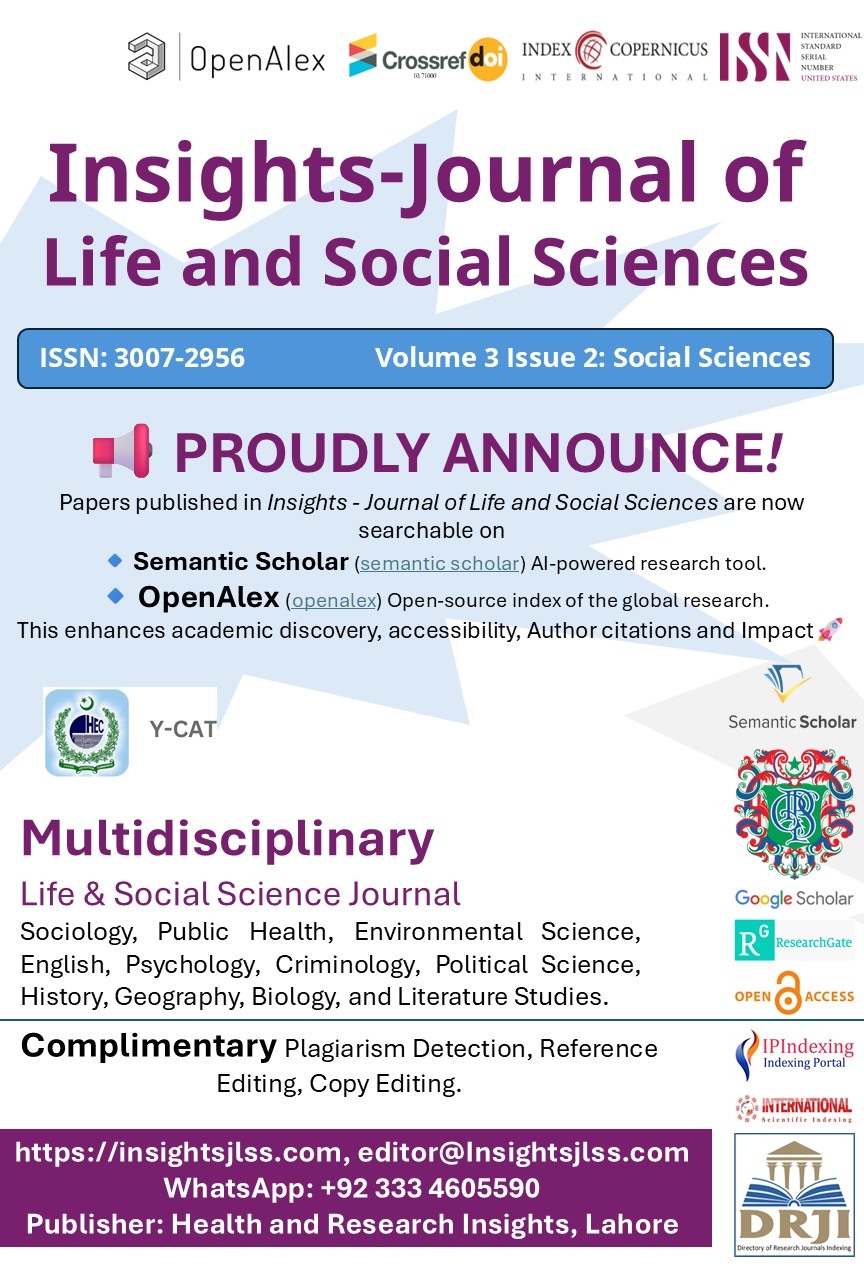POPULATION OF WHEAT APHID (RHOPALOSIPHUM PADI L.) AND IT’S ASSOCIATED NATURAL ENEMIES
Main Article Content
Abstract
Background: Wheat (Triticum aestivum L.) is a globally significant cereal crop, frequently threatened by pest infestations that limit yield potential. Among these, aphids are considered major pests, directly damaging plant tissues and indirectly transmitting viral pathogens. Biological control through natural predators offers an ecologically sound alternative to chemical management. However, varietal tolerance and predator abundance across different wheat genotypes remain underexplored, particularly in local agro-climatic conditions.
Objective: To assess aphid population dynamics, the abundance of natural enemies, and yield performance across fourteen wheat genotypes under natural field conditions during the 2019 growing season.
Methods: The experiment was conducted using a Randomized Complete Block Design (RCBD) with three replications at the Agriculture Research Institute, Tarnab, Peshawar. Fourteen wheat genotypes were monitored weekly for aphid infestation and populations of natural predators including Coccinellids, Syrphid flies, and Lacewings. Aphid counts were recorded per leaf on randomly selected tillers, while natural enemies were counted per plant. Yield data were collected at harvest and expressed in kg ha⁻¹. Statistical analysis was performed using ANOVA followed by LSD at a 5% significance level.
Results: Aphid infestation varied significantly among genotypes, ranging from 0.01 to 11.9 aphids leaf⁻¹. PS-13 recorded the lowest mean aphid density (4.09), while Pakhtunkhwa-15 showed the highest (5.48). Coccinellids ranged from 0.00 to 1.49 plant⁻¹, peaking in the third week of March. Syrphid flies were most abundant in the fourth week of February, with values between 0.25 and 0.84 plant⁻¹. Lacewings peaked at 2.07 plant⁻¹ during the second week of February. PS-13 also achieved the highest yield (3412.55 kg ha⁻¹).
Conclusion: Wheat genotypes exhibit differential susceptibility to aphids and support varying levels of natural enemies. PS-13 showed resistance to aphid infestation and produced the highest yield, indicating its suitability for integrated pest management strategies.
Article Details

This work is licensed under a Creative Commons Attribution-NonCommercial-NoDerivatives 4.0 International License.
